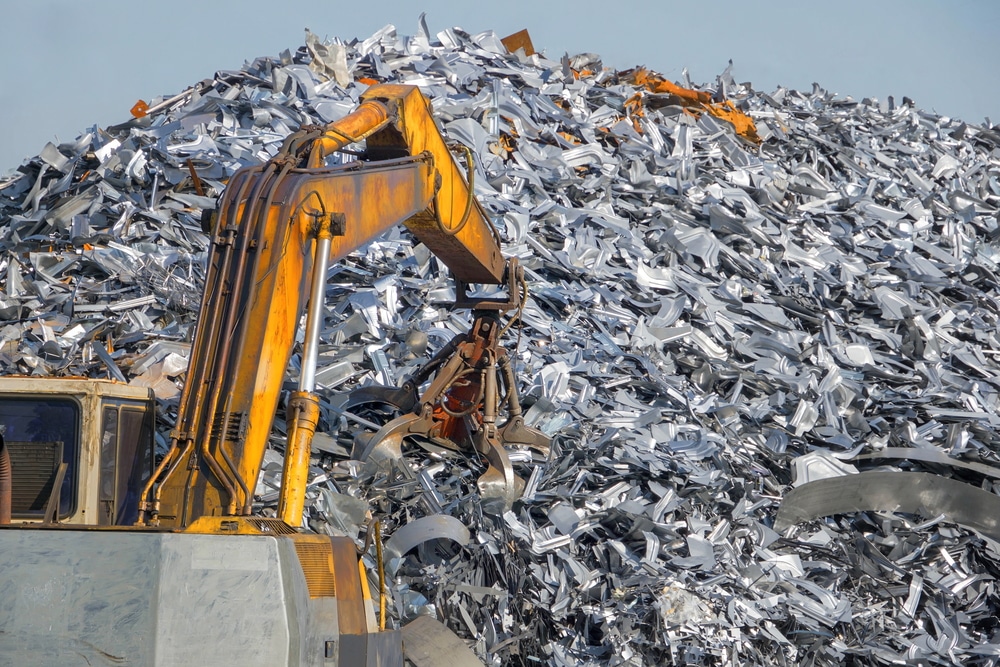Guide to Steel Recycling
April 1, 2022 | Categorized in: Production

Steel is often called “the most recycled material in the world,” but is it really recycled more than something like cardboard? When you think of eco-friendly or “green” materials, steel probably isn’t the first thing that comes to mind. However, steel has a unique combination of properties that include magnetism and minimal (or no) degradation and might make its title more reasonable than many would expect.
What is meant by “recyclable”?
If a material can be recycled, it means that its waste can be converted back into reusable material, or returned to a previous stage in its life cycle. In this case, it would mean that scrap steel is converted back to new, usable steel for another job.
Is steel recyclable?
Steel does, in fact, live up to its name as one of the most recyclable materials on the planet. It’s considered 100% recyclable and just in the United States, over 80 million tons of steel are recycled each year. That leads to almost 70% of all crude steel produced in the country being made from recycled material.
What makes it so recyclable?
So why is so much steel recycled? It comes down to how efficient recycling steel actually is. Being one of the only 100% recyclable materials in the world and not losing its properties through recycling means that it doesn’t lose strength or quality through multiple life cycles and repurposing. In addition to this lack of degradation, steel is also magnetic, making it very easy to separate from other junk and materials. Because the energy and labor efficiency required to collect and refine recycled steel is much less than for new steel, it’s widely used across industries that use steel.
Steel recycling process
The steel recycling process can be broken down into six major steps:
- Collection: Metal is more likely to be sent to a scrapyard than to a junkyard compared to other materials, so this is where the recycling process often begins.
- Sorting: Once the metal is gathered, magnets, sensors, and more separate the steel from other metals and materials.
- Shredding: To make the following step more energy-efficient and quicker, the scrap steel is shredded into smaller pieces.
- Melting: The smaller pieces require less energy to melt, which is usually done in a large furnace. This step of the process can take anywhere from a few minutes to a few hours.
- Purification: The last step before cooling back to solid steel ensures that recycled steel is free of contaminants before solidifying.
- Solidifying: Once the molten steel is purified, it can be cooled until it solidifies back into bars or other basic shapes for use in new projects.
Steel mills have become more vertically integrated in the last 10-15 years, incorporating more of these steps under their subsidiaries. With recent technological advancements such as the EAF (electric arc furnace), steps 3-6 can be completed more efficiently and in a more environmentally-friendly way than traditional blast furnaces had been able to.
Where is recycled steel used?
Because of the general prevalence of recycled steel, it’s unsurprising that almost anywhere steel is used, recycled steel is present. However, the most common uses are generally infrastructure (roads and bridges), automobiles (car bodies), and appliances (refrigerators and dishwashers). Because of steel’s environmental efficiency and eliminating much of the need for mining and processing natural resources without any decrease in material quality, most industries that use steel opt for the lower price tag of recycled steel.
Economic impact of recycling steel
Not only does steel’s recyclability reduce its environmental footprint and impact, but it also helps manufacturers to be more cost-efficient. Avoiding the costly process of mining and processing raw ore from the ground means that they can achieve the same quality at a much lower cost. The process of recycling also creates hundreds of thousands of jobs each year and over $110 billion in economic activity.
Scrap steel prices
Because recycled steel is so important to many fabricators, selling scrap steel for recycling into usable steel is a lucrative business. Even companies or manufacturers that only produce steel as a byproduct of their processes often take advantage of this and sell it for additional income.
Some of the current national average prices of scrap steel for recycling as of June, 2022 are:
- Shreddable Steel: $205.00 per ton
- #1 Heavy Melting Steel (HMS): $270.00 per ton
- Plate and Structural Steel (P&S): $280.00 per ton
- High-Speed Steel (HSS): $0.15 per lb
- Stainless Steel: $0.50 per lb
An environmentally-friendly building material
If you’re looking for eco-friendly (or just high-quality) steel for your next project, look no further than Service Steel Warehouse. We’ve supplied exceptional steel products to customers for almost 60 years, and have a massive inventory of different shapes and capabilities for a variety of finishing services to fit your requirements.
